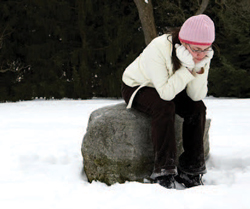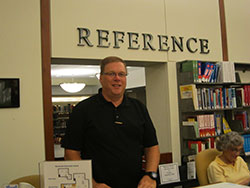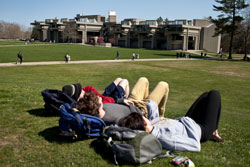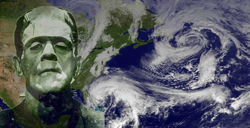The Symptoms and Treatment of Seasonal Affective Disorder
 As cold weather closes in, the winter chill blankets the campus. With less hours of sunshine and more indoor activities, some people are prone to the winter blues. Not everyone who experiences the blues can come out of it so easily. In some cases, depression can last all season long.
As cold weather closes in, the winter chill blankets the campus. With less hours of sunshine and more indoor activities, some people are prone to the winter blues. Not everyone who experiences the blues can come out of it so easily. In some cases, depression can last all season long.
Seasonal affective disorder (SAD) is a depression that occurs at the same time every year. It can zap your energy and cause significant mood changes, according to Thomas McCarthy, psychological counselor at the University.
SAD has several symptoms similar to depression but there are a few that make it distinctly different. Everyone experiences a random depressive mood differently, McCarthy said. A person’s appetite can either increase or decrease and sleep patterns can be affected by too much sleep or sleeplessness. “For seasonal affective disorder, it seems there is an increased sleep, especially during the day, and an increased appetite rather than a decreased appetite.”
Other symptoms of SAD include depression, hopelessness, anxiety, loss of energy, social withdrawal, oversleeping and loss of interest, according to the Mayo Clinic.
McCarthy said these symptoms are also common with depression since they can occur at any time of the year. It is the seasonal pattern of SAD that contributes to the diagnosis. To establish this pattern, a client would seek help for depression on more than one occasion at the same time each year. After a minimum of two years, a diagnosis of SAD is possible as long as the depression is limited to one season and not experienced during the rest of the year.
“The difference between [SAD] and the winter blues is that usually it affects their functioning to a certain extent whether it be socially, occupationally, or school,” McCarthy said. “If you’re not getting enjoyment out of things you would normally enjoy, or withdrawing from friends and your mood has significantly changed, you should probably go talk to someone.”
Although the winter blues may seem common, SAD is not. In McCarthy’s five years of working at the University, he has only seen four cases that were diagnosed as SAD. “The majority of depressive incidences that I see is really a depressive episode rather than SAD,” McCarthy said. “It does happen, you do see it, but in my experience here it’s more rare than some of the other disorders.”
There is no known cause of SAD but the biological clock, serotonin levels, and melatonin levels may contribute to depression symptoms, according to the Mayo Clinic. The change in sunlight hours can affect a person’s sleep pattern, add to depression, and affect serotonin, a brain chemical that controls the mood. The hormone melatonin, which can be imbalanced due to seasonal changes, also affects sleep patterns and mood.
McCarthy recommends taking long walks to expose yourself to more sunlight in the winter months. He also said exercise can help and one should not isolate from friends and family regardless of the urge to do so. Doing these things on your own can help improve mood and functioning.
There are several ways to treat SAD including medication, Cognitive Behavioral Therapy (CBT) and light therapy. “Medication in conjunction with CBT is effective,” McCarthy said. The best way to fight the depression is to start treatment early as winter approaches. If medication is used, the treatment should begin in October because it can take four to six weeks to become effective.
Light therapy can improve depression in severe cases, although the lights can be expensive. Lights that mimic the sunrise are sometimes appropriate. They emit UV light similar to tanning beds. Some people may feel improved moods after using tanning beds for this reason.
Even though feeling depressed can be a struggle, SAD does not last. “At the end of winter as you’re moving into spring, with or without treatment, the symptoms start to subside anyway,” McCarthy said. With a clinical depression, the symptoms do not improve with the seasonal changes.
SAD is more common in women than men and can begin during the teen and early adult years. McCarthy said there can also be a genetic component. Finding exact statistics of how many people are affected proved difficult. McCarthy estimates that about two percent of people suffer from SAD and five percent are affected by clinical depression.
According to the Mayo Clinic, winter is not the only season when people can be affected by SAD. Cases can also occur during the summer months, although some of the symptoms may vary. Symptoms of summer SAD include anxiety, trouble sleeping, irritability, agitation, weight loss, poor appetite, and an increased sex drive.
The University’s counseling services offer help to students suffering from depression. SAD occurs in the winter when students are home on break, but their office will help find a referral near a student’s home so that treatment can continue.
Students can contact counseling services by phone, walk-in, or email at mucounseling@monmouth.edu.
PHOTO COURTESY of cnn.com.



